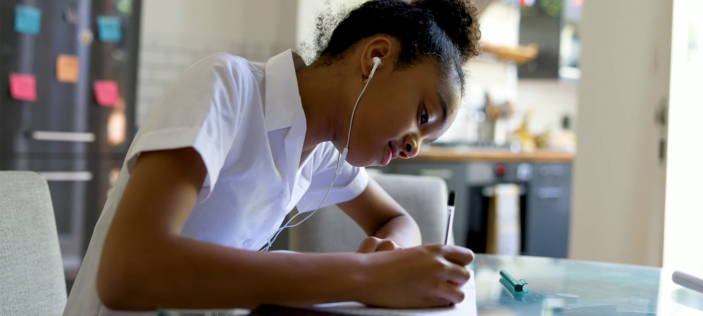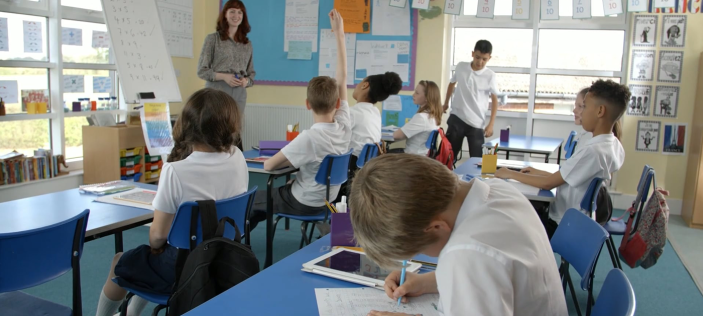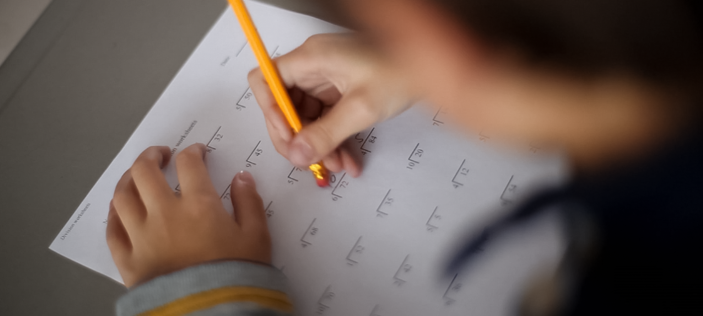
The following blog is written by Tom Dupplaw, maths subject leader and Year 5 teacher at Reedings Junior School, Hertfordshire. Tom shares his vision and strategy for enhancing teaching and learning across the school using ESSENTIALMATHS Rehearsal and Reasoning Sheets.
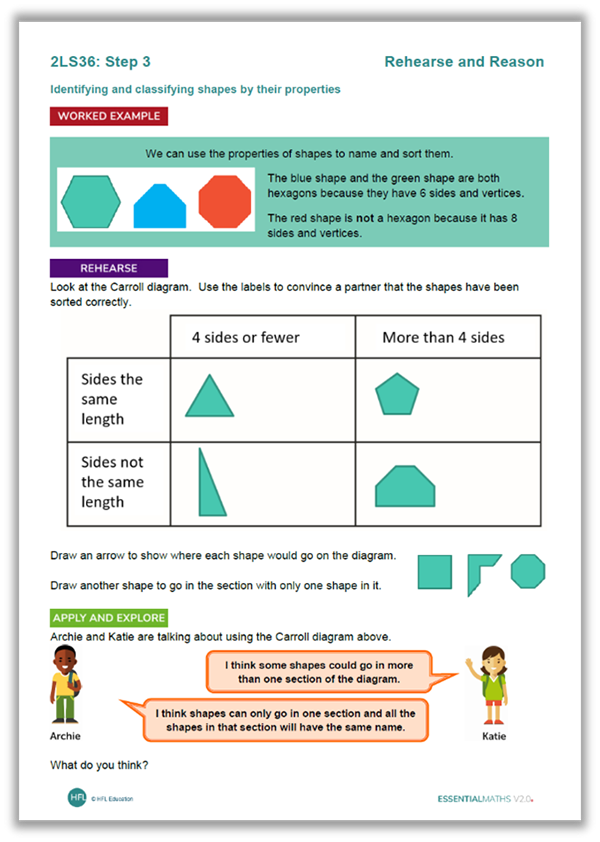
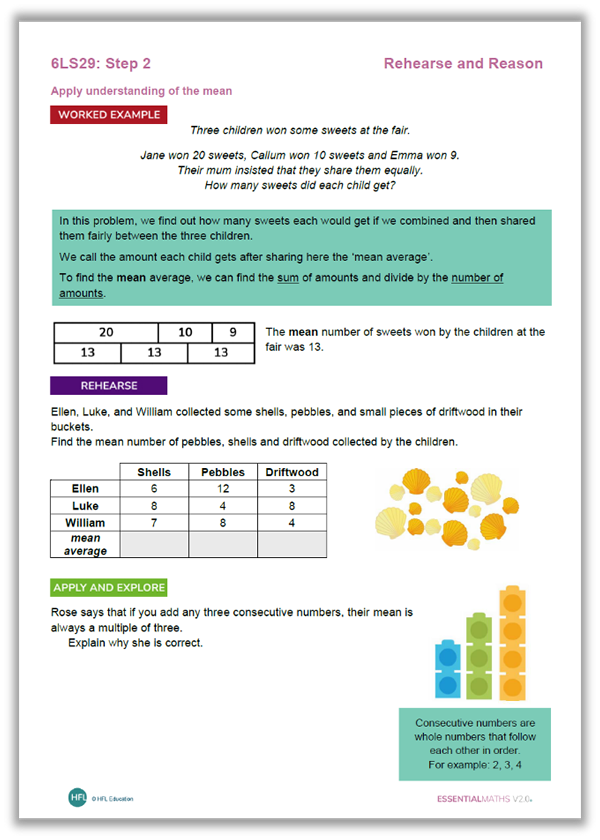
I have been teaching at Reedings Junior School (a two-form-entry school in Sawbridgeworth) for 10 years and have led maths for 5 of those. I have been working with Nicola Adams from the HFL Education maths team for 4 years to develop and enhance maths teaching and learning across the school.
I was asked by Nicola to share some details on how we use ESSENTIALMATHS planning and pupil rehearsal materials at Reedings Junior.
We have used the ESSENTIALMATHS curriculum since its launch back in 2017. We love the level of detail and focus on clear sequencing in the learning progression. We value the suggestions for using high-quality mathematical talk and resources to embed understanding.
A welcome relief to teacher workload
We recently started using the Rehearsal and Reasoning sheets (formerly known as Practice sheets) which support many of the learning sequences. These provide children with the opportunity to gain more insight into the core ideas of each step (while also providing some welcome relief to teachers and their planning load!).
The sheets are not intended as ‘worksheets’; rather as a selection of questions and tasks for teachers and children to select from, depending on the type of practice needed. Questions and problems in the sheets build progressively through a step of learning and include worked examples, routine rehearsal, retrieval, exploration and application.
“I can identify who needs support and can let others be independent. It gives an idea of where to aim as an end point and gives opportunity to practise.”
Teacher reflections
Considering lesson structure
As maths leader at my school, I set about understanding how to intertwine use of the pupil rehearsal sheets into our lessons in a successful way and decided to name each part of the lesson with a word or phrase, eventually settling on ‘Learn, Practise (soon to be Rehearse), Apply’.
I trialled this structure in my year group (Year 5) and saw immediate success, with children understanding the process of learning a new skill, practising it and then applying it to problem solving and reasoning.
“It helps because it’s easier to apply if you’ve had lots of practice first’.
A Year 6 pupil
Once children have practised their skill until they are sufficiently proficient, the ‘Apply’ stage is entered (some children may be asked to move on to this at earlier stages, and some lessons may just focus on this entirely).
Developing pupil oracy
A constant through all stages is the use of speaking and writing frames to encourage mathematical talk and the use of high-quality vocabulary, which ESSENTIALMATHS has always been brilliant for.
“It helps me feel more confident with my maths”.
A Year 3 pupil
Developing pupil independence
Practise and Apply questions and activities are clearly labelled for pupils to select from. They are becoming more and more self-sufficient at choosing tasks appropriate to their level of understanding and confidence in each small step.
“We learn, practise and apply in lessons so we can rehearse questions over and over if we need to and then solve problems as a challenge. I like that we get to choose our questions, but our teacher will help us choose sometimes”.
A Year 5 pupil
Some examples of children’s question selection and recording
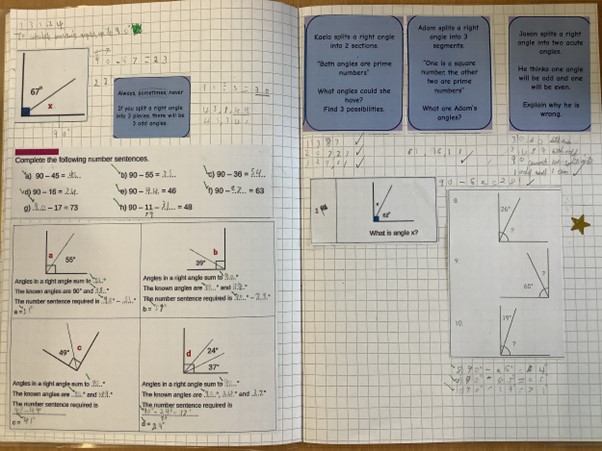
A year 5 pupil’s book showing a ‘Learn’ activity at the start, working together to understand a concept, before the ‘Practise/Rehearse’ activities underneath to secure a core understanding. This child then moved on in the lesson to complete several ‘Apply’ questions, which in this case, included investigating statements and proving that something was incorrect.
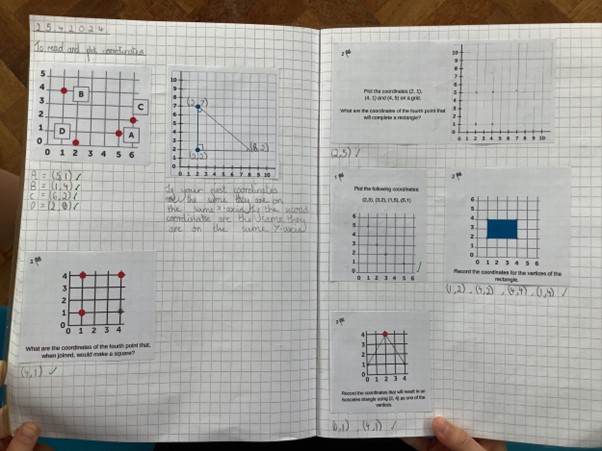
A year 5 pupil’s book showing learning and problem solving with coordinates.
“In ‘practise’, you get used to doing something and then you can use it in a problem”.
A Year 5 pupil
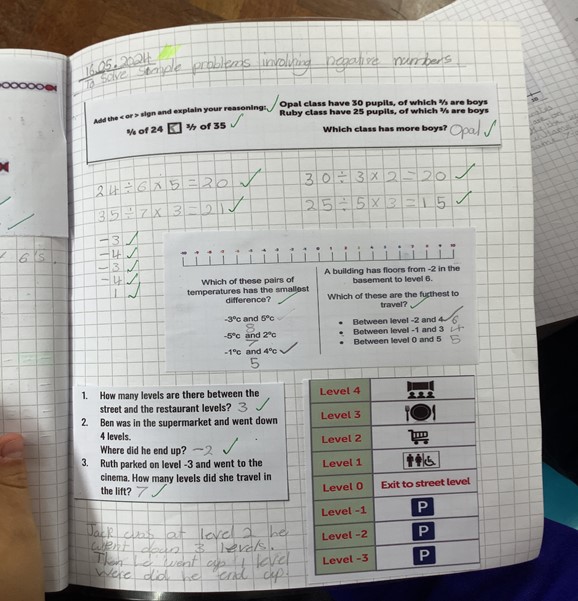
A year 4 pupil’s book showing a range of practise and apply questions.


